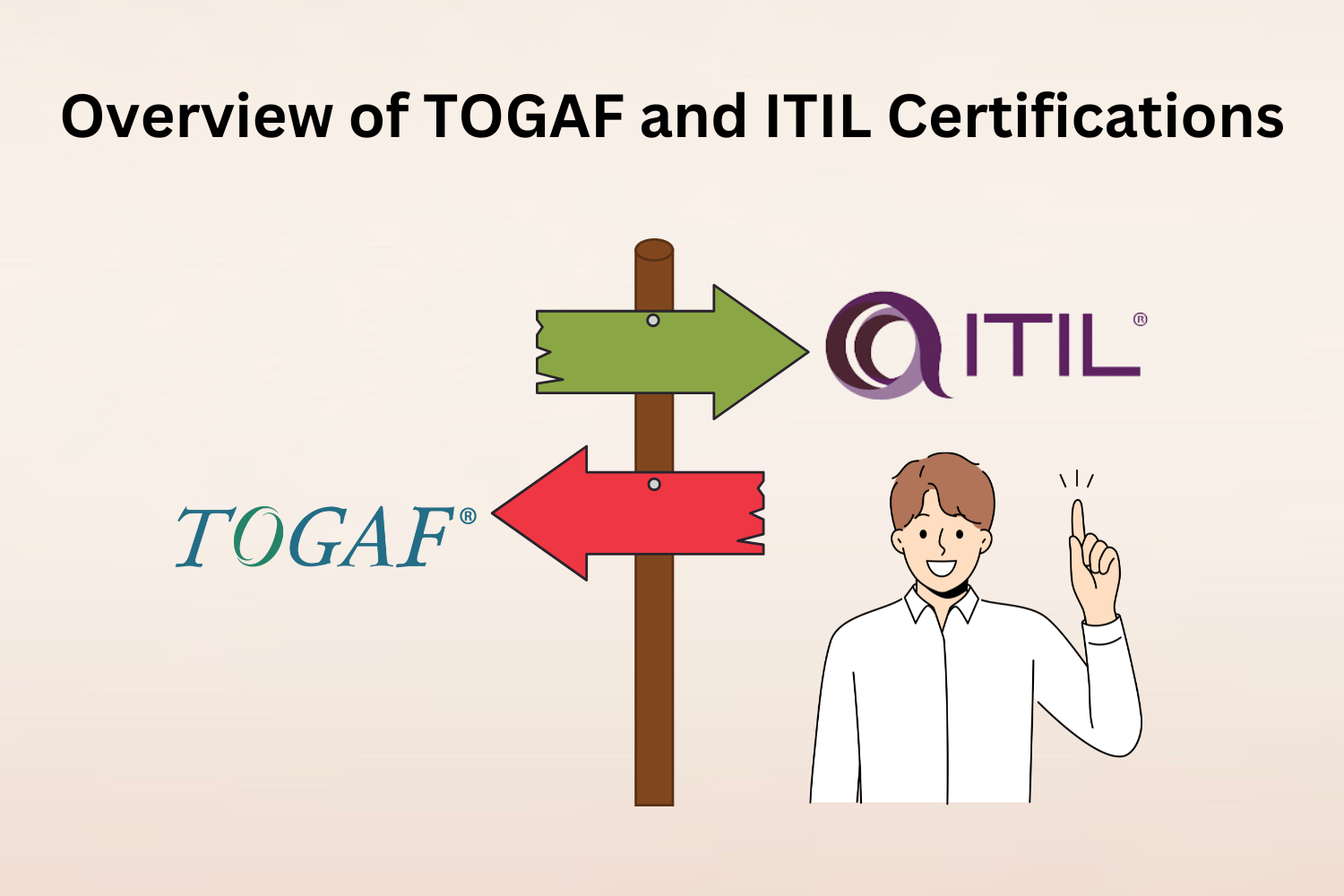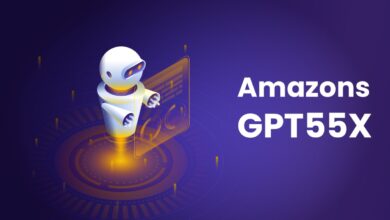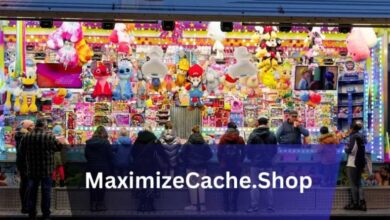
Overview of TOGAF and ITIL Certifications
The Open Group Architecture Framework (TOGAF) and the Information Technology Infrastructure Library (ITIL) are two well-known frameworks in the field of information technology (IT) architecture and service management. ITIL and TOGAF Certification provide valuable insights and best practices when managing IT environments, so choosing between them can be difficult. This blog helps individuals understand the TOGAF vs ITIL discussion and make informed decisions in their IT careers by providing an overview of TOGAF and ITIL. We will highlight their fundamental principles, components, and applications here.
Table Of Contents
- Understanding TOGAF and ITIL
- Essential Components and Principles of TOGAF and ITIL
- Applications and Benefits of TOGAF and ITIL
- Conclusion
Understanding TOGAF and ITIL
TOGAF (The Open Group Architecture Framework)
To design, plan, execute, and manage IT architectures in a structured manner, TOGAF offers a framework for enterprise architecture. A complete methodology and set of tools for aligning business objectives with IT strategy and operations is provided by TOGAF and developed by The Open Group. Reference models, the Architecture Development Method (ADM), the enterprise continuum, and the architecture content framework are all parts of TOGAF. A TOGAF certification shows that you have mastered the TOGAF framework and can use it effectively to design IT solutions for your company.
ITIL (Information Technology Infrastructure Library)
The “Information Technology Infrastructure Library” (ITIL) is a collection of standards and best practices for managing and providing IT services. It is a framework for IT service management (ITSM). An AXELOS product, IT Infrastructure Library (ITIL), provides a framework for methodically enhancing service quality and efficiency, streamlining service delivery, and coordinating IT services with business requirements. The stages of ITIL’s lifecycle include service strategy, design, transition, operation, and continual improvement. A person’s capacity to aid in the administration and delivery of IT services inside organisations can be demonstrated by earning an ITIL certification, which verifies their comprehension of ITIL concepts and practices.
Essential Components and Principles of TOGAF and ITIL
TOGAF:
Architecture Development Method (ADM)
The ADM is a framework for creating and executing IT architectures in stages, including requirements gathering, design, planning, and governance.
Architecture Content Framework
Structured organisation and management of architecture artefacts, such as business, data, application, and technology architectures, is achieved through an architecture content framework.
Enterprise Continuum
To aid in the creation and modification of enterprise architecture, Enterprise Continuum compiles reference models, architectural patterns, and other reusable architectural assets.
TOGAF Reference Models
Several standardised models and frameworks are available to aid in the creation and execution of architectural designs; examples include the TOGAF Technical Reference Model (TRM) and the III-RM.
ITIL:
Service Strategy
Outlines the long-term goals and essential components for providing IT services that support organisational objectives.
Service Design
Service design is known as information technology (IT) service, process, and architecture design that meets business needs and service level agreements (SLAs).
Service Transition
Service transition management aims to minimise the impact on business operations and maximise value delivery while implementing new or modified IT services.
Continual Service Improvement
Daily delivery and support of IT services, emphasising service availability, performance, and reliability, is the responsibility of service operation.
Continual Service Improvement
The goal of continuous service improvement is to find ways to improve IT services, processes, and capabilities by constantly measuring, analysing, and optimising them.
Applications and Benefits of TOGAF and ITIL
TOGAF:
Enterprise Architecture Planning
Organisations can benefit from TOGAF’s enterprise architecture planning services in three ways: better aligning IT investments with business objectives, increasing operational efficiency, and driving digital transformation initiatives.
IT Governance and Compliance
The Top-Level Framework for Applications and Services (TOGAF) offers a blueprint for building IT governance frameworks, procedures, and controls to guarantee conformity with industry standards and regulatory mandates.
Vendor and Technology Management
To better manage technology solutions and vendors, businesses can use TOGAF to assess, choose, and oversee them per enterprise architecture standards and principles.
ITIL:
Service Delivery and Management
Organisations can effectively deliver and manage IT services with the help of the IT Infrastructure Library (ITIL). This helps ensure services align with business objectives and satisfy customer needs and expectations.
Incident and Problem Management
The Information Technology Infrastructure Library (ITIL) offers methods and processes for handling problems and incidents, reducing downtime, and returning to normal operations as soon as possible.
Change and Release Management
ITIL is a lifesaver in managing changes to IT services and infrastructure. It helps organisations evaluate, authorise, and implement changes with utmost care, minimising risk and impact on business operations.
Conclusion
IT service management and architecture have adopted two widely used frameworks, TOGAF and ITIL. Both frameworks provide distinct approaches to problem-solving and best practices for reaching organisational goals. Professionals who have earned the TOGAF and ITIL certifications have proven their mastery of enterprise architecture planning and implementation, respectively. Professionals can drive digital transformation, optimise IT service delivery, and achieve business success in today’s complex and dynamic IT environments by understanding the key components, principles, and applications of TOGAF and ITIL.



